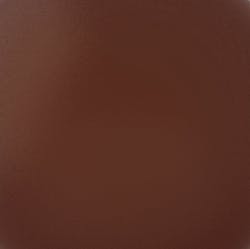Identifying Color Trends: Then and Now
History provides an incredible perspective of color. As colors have made their mark in various time periods and socioeconomic environments, they tell the story of societies. The onset of trend forecasting has lent both a spotlight for these colorful histories and a magnification into coming trends. Equipped with industry experts and exhaustive research, Sherwin-Williams Coil Coatings explores the life cycle of color within industrial sectors to determine what it means for designers both today and in the years ahead.
Color Way Back When
Throughout most of history, the availability of color determined its desirability. Since the commoners of the Middle Ages would not have had the opportunity to exercise stylistic preference as much as the consumers of today, limited dyeing capabilities, medieval technology and scarcity of materials meant that one palette could largely define an entire era. Meanwhile, the commodification of those rarer colors and materials meant the upper class and royalty could use color to convey social status.
As manufacturing ramped up during the Industrial Revolution, so did the standardization and optimization of color. Broader manufacturing capabilities allowed companies to use color to define their brand or experiment with color on various substrates, all while producing more hues than ever before. Color was significantly more attainable and could define by the decade, rather than by the dynasty.
The standardization of color would be evident in the twentieth century as well, particularly in the paints and coatings industry. Albert Munsell, an American color theorist, was dedicated to developing standards for precise pigment specifications in the early 1900s. Munsell’s notations took off in the textile industry which led renowned American educator Faber Birren to translate these specifications to be used for paint. We have plenty to thank these innovators for in their standardization efforts: for instantly recognizable farm equipment, paint color cards and even some of the colors found in a box of crayons.
While color trends had long life cycles during earlier eras, the manufacturing and standardization of color changed the duration of its popularity. Color went from being practical to being an individualistic and aesthetic preference. Whether in the fashion, home decor or manufacturing industries, businesses needed ways to measure these trends to anticipate the growing needs of consumers.
Color Forecasting Begins
During World War I, the Textile Color Card Association emerged intending to predict the color trends of the next few years so fashion-forward materials could be produced on home soil. As global supply and demand fluctuated at this time, other countries experienced this same shift and turned to color forecasting to provide a solution.
Throughout the remainder of the twentieth century and now into the twenty-first century, color standards are everywhere. Starting with car shows and color swatch handouts, then moving to architect conferences and online color selection tools, the influence of color has become more accessible than ever before. Color forecasting is now a critical component for many industries, as educated forecasting allows manufacturers to keep pace with consumers and competition.
Industry Trend Setters
Once color forecasting became an established practice, it was up to businesses to decide how to utilize it. The Color Marketing Group (CMG), the non-profit at the forefront of color trend analysis, is one such tool. CMG works with its members – including Sherwin-Williams – across various industries to determine the crossovers and influences of society that will define color forecasts.
After collaborating with the industry experts in CMG and the internal team, Sherwin-Williams produces an annual company-wide color forecast. This forecast begins with the residential paint market in mind, with the opportunity to be translated into various industrial divisions. (Remember when Birren translated Munsell’s textile specifications into the paint industry?) This year, Sherwin-Williams Coil & Extrusion Coatings will introduce its first forecast, which will feature the innovative textures, effects and design elements for metal products that will define the industry over the next five years.
Forecasting requires a trusted and standardized process. Like the limited access to materials in the Middle Ages, the Sherwin-Williams Coil Coatings team must account for the capabilities of the industry when translating color. To produce a palette that resonates with industrial clients, the team collaborates with the lab to determine the finishes, textures, color shifts and/or gloss levels that will work best. And like the alluring car shows and fashion booklets of previous eras, these finalized colors and effects are presented alongside compelling imagery that will inspire architects in their specifications.
Color trends have been explored across history, which makes color forecasting not just a futuristic endeavor, but a historical one, too. These insights into society, materials and capabilities will continue to influence the trends of tomorrow, by looking at where we’ve been and where we can go next.
To learn more about Sherwin-Williams color trends and forecasting, visit architects.sherwin.com.



